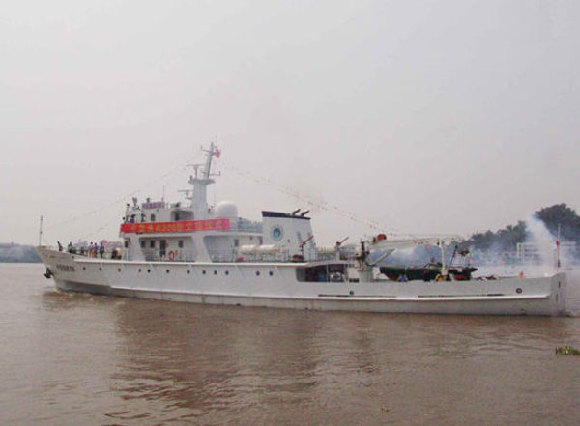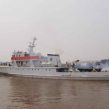
Shelving Differences While Hedging in the South China Sea
Publication: China Brief Volume: 11 Issue: 17
By:

With the summer winding down along with the tensions in the South China Sea, China engaged the principle disputants of this round of regional tensions. China hosted Philippine President Benigno Aquino III for a five-day state visit beginning August 30. In Beijing, Chinese and Vietnamese defense officials met in late August to discuss way to reduce tension and the two sides met again in Hanoi last week for the fifth round of the Annual Sino-Vietnamese Steering Committee. Although the rhetoric of these meetings reiterated commitments to peaceful settlement of disputes and pushed economic ties, Hanoi and Manila both sought domestic and foreign means to hedge against Chinese coercion in the South China Sea.
Both sets of bilateral dialogues downplayed recent tensions and played up the importance of economic ties. In the spirit of boosting trade, both of China’s dialogue partners declared "the South China Sea problem is not the entirety of [our] relations" (Dongfang Zaobao, September 6; China Daily, September 6). As if to emphasize the economic nature of the visit, Aquino brought 200 businesspeople as part of his entourage and Philippine officials hinted at Chinese interest in joint mining ventures the goal of enticing $2 to $7 billion of new investment (Xinhua, August 31; Sun Star [Philippines], August 31). In addition to signing mining agreements, Beijing and Manila agreed upon a five-year plan for doubling bilateral trade to $60 billion and the number of tourists to 2 million by 2016 (Xinhua, September 1; Reuters, September 5). These kinds of deals have propelled China toward becoming the Philippines’ third largest trading partner, following the United States and Japan (Xinhua, September 1).
Sino-Vietnamese defense talks at the end of August and fifth Annual Sino-Vietnamese Steering Committee exhibited a similarly conciliatory tone. As part of the discussion on the South China Sea, Defense Minister Liang Guanglie—just as he did with Admiral Mullen earlier this summer—encouraged Vietnam to join China in opposing internationalization or avoiding complexity in the territorial dispute (PLA Daily, August 30; "China Reacts to Admiral Mullen Visit," China Brief, July 29). Both sides appear to have decided to move forward on a military hotline between Beijing and Hanoi, but its not clear what concrete steps have been agreed (Global Times, September 1). The Steering Committee dialogue carried a somewhat softer tone, celebrating the rapid growth of Sino-Vietnamese trade and China’s status as the Vietnam’s top trading partner (Xinhua, September 7; China Daily, September 6). The committee chairs, State Councilor Dai Bingguo and Deputy Prime Minister Nguyen Thien Nhan, issued a joint statement reiterating promises to abide by the Declaration on the Conduct of Parties in the South China Sea. Although not present for this meeting, Vietnamese Party Chief Nguyen Phu Trong stated "forming a friendly and cooperative relationship with China is a priority in Vietnam’s long-term strategy" (China Daily, September 9).
Hanoi and Manila however are not taking Beijing’s reassurances at face value, even if China’s newly released white paper, China’s Peaceful Development, states China has "done its utmost to uphold peace and stability in the South China Sea," Almost concurrently with Aquino’s visit, the Philippine military hosted a U.S. congressional delegation from the House Armed Services Committee to discuss how Washington can support Philippine defense needs (Sun Star, September 6). Following Aquino’s departure from China, Manila announced it would purchase another U.S. cutter and six training aircraft and, according to the Chinese press, increased its maritime patrols of the disputed areas in the South China Sea (Chongqing Chenbao, September 5; Dongnan Zaobao, September 5).
Without reliable treaty partners, Hanoi has been intensifying engagement with India and securing higher-quality weapons—at odds with Beijing’s direction to avoid internationalizing regional concerns—in addition to its growing relationship with the United States. India probably has been the suitor, but, as the recent controversial Indian Navy ship visit to Nha Trang—a port closed for many years to foreign militaries—shows, Hanoi has received Indian overtures with increasing willingness (PLA Daily, August 18; Times of India, September 13). Vietnam’s long-awaited purchase of 6 Russian-built Kilo class diesel-electric attack submarines appears to have been finalized in July and Russia will deliver the submarines in 2014. Drawing upon both relationships, Hanoi also may be able to buy the joint Indo-Russian BrahMos anti-ship missile if it can get the agreement of both partners (Asia Times, August 17; Phoenix Net, August 15; RIA Novosti, June 3, 2010). The larger question is whether these moves provide Hanoi and Manila with a credible counterbalance in the face of the stronger domestic pro-trade and business constituencies created by the rush for Chinese investment.
South China Seas tensions may be winding down with the talk of burgeoning trade; however, friendly rhetoric does not conceal that no real progress was made, except by the Churchillian standard of "to jaw-jaw is always better than to war-war." Semi-official press reports indicate Beijing stands behind its claim that it "has indisputable sovereignty over the [South China Sea’s] islands and surrounding waters…based on unambiguous and undeniable historical facts" (Xinhua, August 31). On September 2, Beijing dispatched another Fisheries Administration enforcement vessel to the South China Sea near the Paracel Islands to join the two ships already there (Xinhua, September 2). Although tensions may have temporarily cooled, all sides appear to be preparing for the next round.





